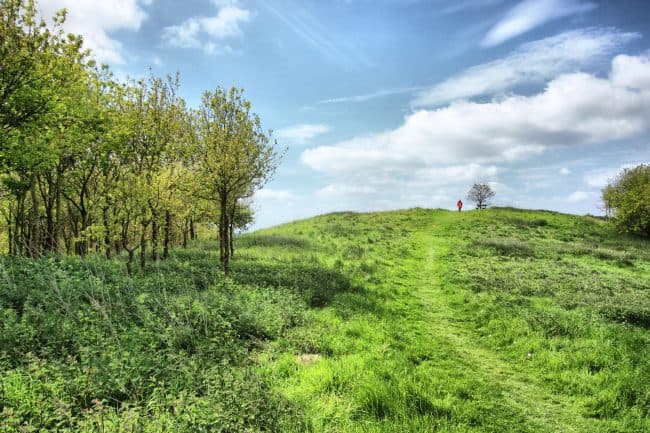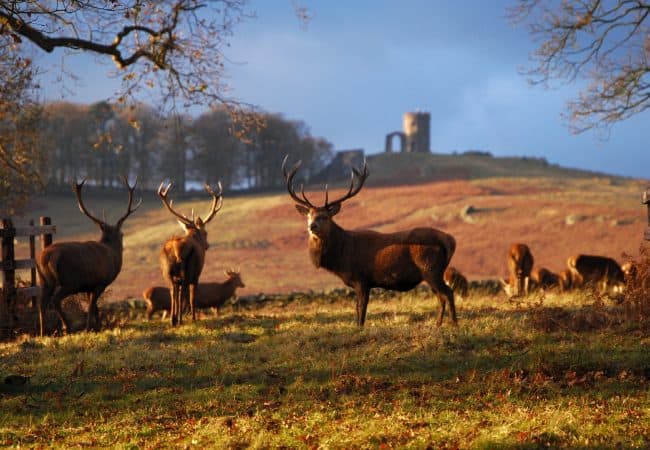From a scarred, post-industrial landscape to thriving woodland packed with wildlife and economic opportunities alike: Meera Dattani laces up her boots to explore the National Forest Way
When local boy John Swanwick returned to Leicestershire after a 30-year absence, he couldn’t quite believe it: “After my father’s death, I wanted to reconnect, explore places I half remembered. Walking the National Forest Way, I saw the ground littered with coal and clinker – I realised I was climbing a former slag heap. The pits and wasteland of my childhood were now silver birch, alder and oak trees.”
The National Forest is England’s first new forest in a thousand years and celebrates its 25th birthday this year. Covering 200 square miles across east Staffordshire, south Derbyshire and north west Leicestershire in one of the country’s least wooded areas, it’s transforming disused coalfields and landfill sites into woodland, wildlife habitats and park land. In fact, forest cover in the area has increased from six per cent to 20 per cent since its inception in 1991. That’s the kind of re-greening that 8,500,000 trees will do; it even makes the target of one third woodland cover seem achievable.
The idea was to create a forest in central England to show how commercial forestry, ecological benefits, mine restoration and tourism can go hand-in-hand. With the aim of linking the ancient forests of Needwood in Staffordshire to Charnwood in Leicestershire, the project has been powering ahead, steered by the not-for-profit National Forest Company.
They call it one of ‘England’s boldest environmental projects’, and according to the organisation’s Carol Rowntree Jones, it’s an exemplar that’s helped pioneer community forests across the country. “The concept of large-scale landscape conservation is now mainstream,” she says.

Photo by Diana Jarvis
One way to discover it is along the 75-mile National Forest Way, a walking route launched in 2014 that explores the landscape’s changing fortunes. Split into 12 stages between four and seven and a half miles long, each with downloadable OS map and step-by-step instructions in either direction, the National Forest Way works equally well for day walks or as a long-distance route. The National Memorial Arboretum in Staffordshire marks the start of the eastbound route and Leicestershire’s Beacon Hill Country Park the westbound one.
Armed with directions, a backpack and a map-reading travel companion, I set off to walk the full route over eight days. We start at the arboretum where 300,000 trees and 300 memorials pay tribute to those who have served the nation as members of the armed forces or civil services. Fields and farms lead us to the pretty village of Alrewas, on to the views from Staffordshire’s Battlestead Hill and the atmospheric Lock House bed and breakfast next to Branston Water Park, which lies on a former open mine.
The further we hike, the clearer it is that this is a countryside walk with a twist. At its most bucolic, we see hay bales, fields of cows, picture-postcard villages and majestic views from spots such as Cadborough Hill Wood and Feanedock Wood. Several squeeze stiles and kissing gates later, we’re in an unremarkable suburb, on A-roads or passing industrial wasteland. But this is never for long. In Derbyshire, the geological marvel of Carvers Rocks and shimmering blue of Foremark Reservoir await; in Leicestershire, there’s the joy of rutting deer herds in Bradgate Park and the wildflowers of Dimminsdale. Linda Jee, who runs Horseshoe Cottage Farm by Bradgate Park, says visitors are surprised at the beauty they find in Leicestershire. “And if it wasn’t for the new route, they might never have discovered it,” she says. This is a stroll through British history, nature and heritage.
This is a stroll through British history, nature and heritage
At the halfway stage, near Swadlincote in Derbyshire, we reach Conkers, one of the first related attractions to open. On the site of a former deep mine, this 100-acre wooded park is a family adventure centre. There are trails, rope courses and indoor play zones, while South Derbyshire Mining Preservation Group’s museum at the same site honours Rawdon Colliery on which Conkers is built. This is a common theme. Places such as Sharpe’s Pottery Museum and Moira Furnace, also at Swadlincote, pay tribute to industries which once flourished here, while offering something new too.
The route also passes through long-standing attractions such as the National Trust’s Calke Abbey in Ticknall. Exploring this decrepit grand estate is a treat, as are the grounds, home to deer herds and the 1,200-year-old Old Man of Calke oak tree. We often veer off-route, to visit the likes of Ferrers Centre for Arts and Crafts, half a mile off the path between Ticknall and Ashby-de-la-Zouch. These once-dilapidated stables now house studios, including that of a blacksmith, as well as a tearoom and gallery. It’s also home to Greenwood Days, a company offering lessons in woodcraft, willow weaving and other skills.
But it’s not just about the woodland. Around 220,000 people live in The National Forest, some newcomers, others long-standing residents who remember pit and quarry closures, distraught communities and a subsequent stagnant rural economy. Now, the visitor economy is worth around £373 million a year, supporting around 4,840 jobs, encouraging woodland businesses such as tree surgeons, timber merchants and furniture-makers. Rowntree Jones says that tree-planting schemes and the diversification of farmland to include tourism-related activities, have also been a boost to challenged farmers in the area.

Photo by Diana Jarvis
What surprised those at the National Forest Company was how quickly local people got behind the project. In 2005, schools, community groups and small businesses were asked to donate patches of land with the aim of creating small woodlands towards a 100-acre wood. It went down a storm.
Planting trees is a popular way for people living nearby, like John Swanwick, to show support. His family dedicated a woodland grove to his father, who passed away two years ago. “I moved to York so I’d seen plenty of regeneration in Yorkshire,” he says. “I knew what to expect here; new housing, ‘sheds’ for light industry and transport. And there it was, but all framed by woodland.”
These habitats also encourage wildlife; the transformation of Sence Valley Forest Park near Ibstock in Leicestershire is a personal highlight. An opencast coal mine from 1982 until 1996, some 100,000 trees have been planted in this now-glorious 150-acre park. Three new lakes connect to the River Sence, hosting otters, the first sightings here in decades, and 150 recorded bird species of which I see many during a peaceful stint in the bird hide.
Walking eastbound, I finally arrive at the top of Leicestershire’s second highest point, Beacon Hill. The 75 miles have proved both exhilarating and educational. The National Forest calls itself a ‘forest in the making’ and it is. Those looking for examples of regeneration and restoration could do worse than look to this ever-evolving landscape for inspiration. And if you’re after a good walk, you know the Way.
Photo by Ben Hall
Main image by Ben Hall